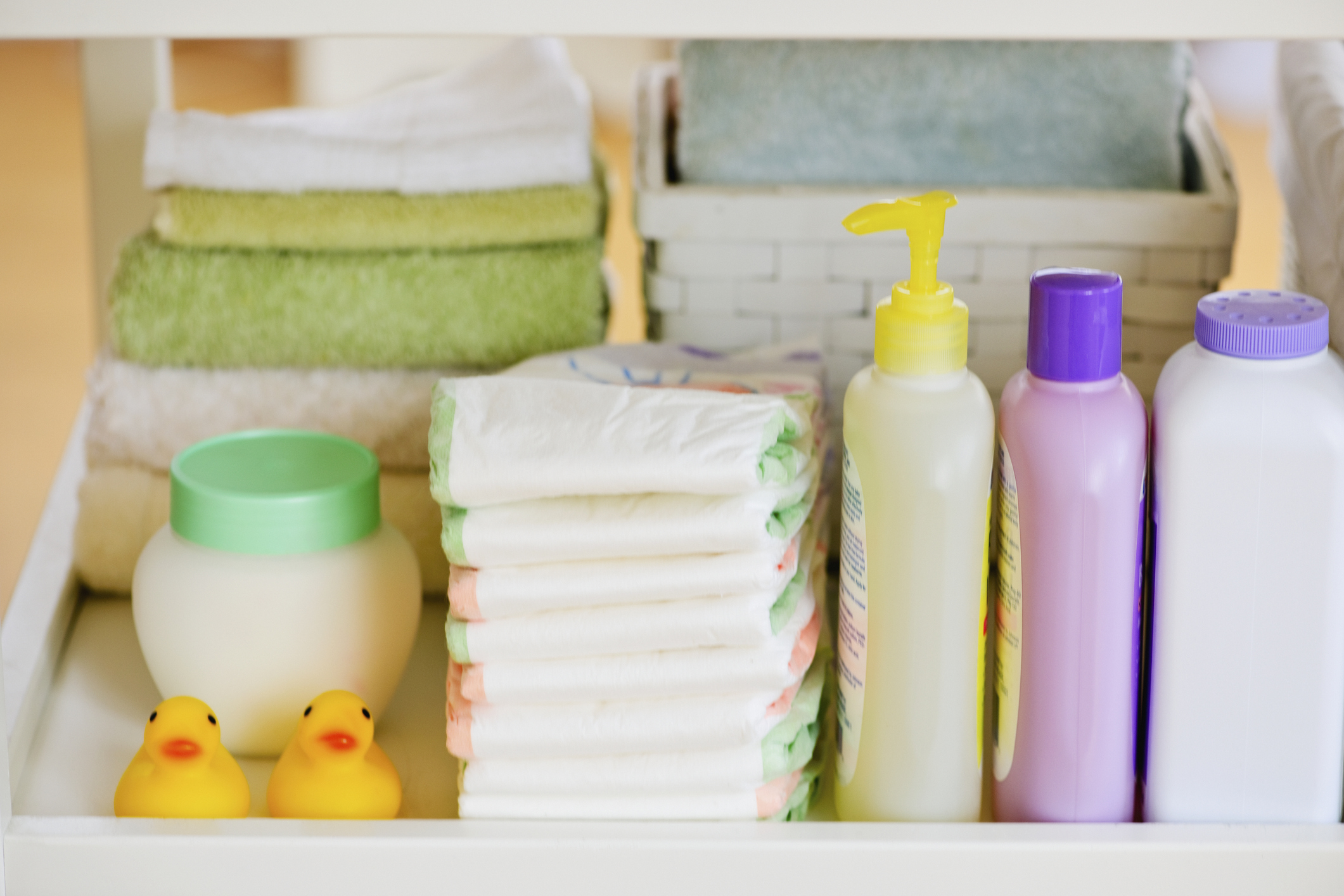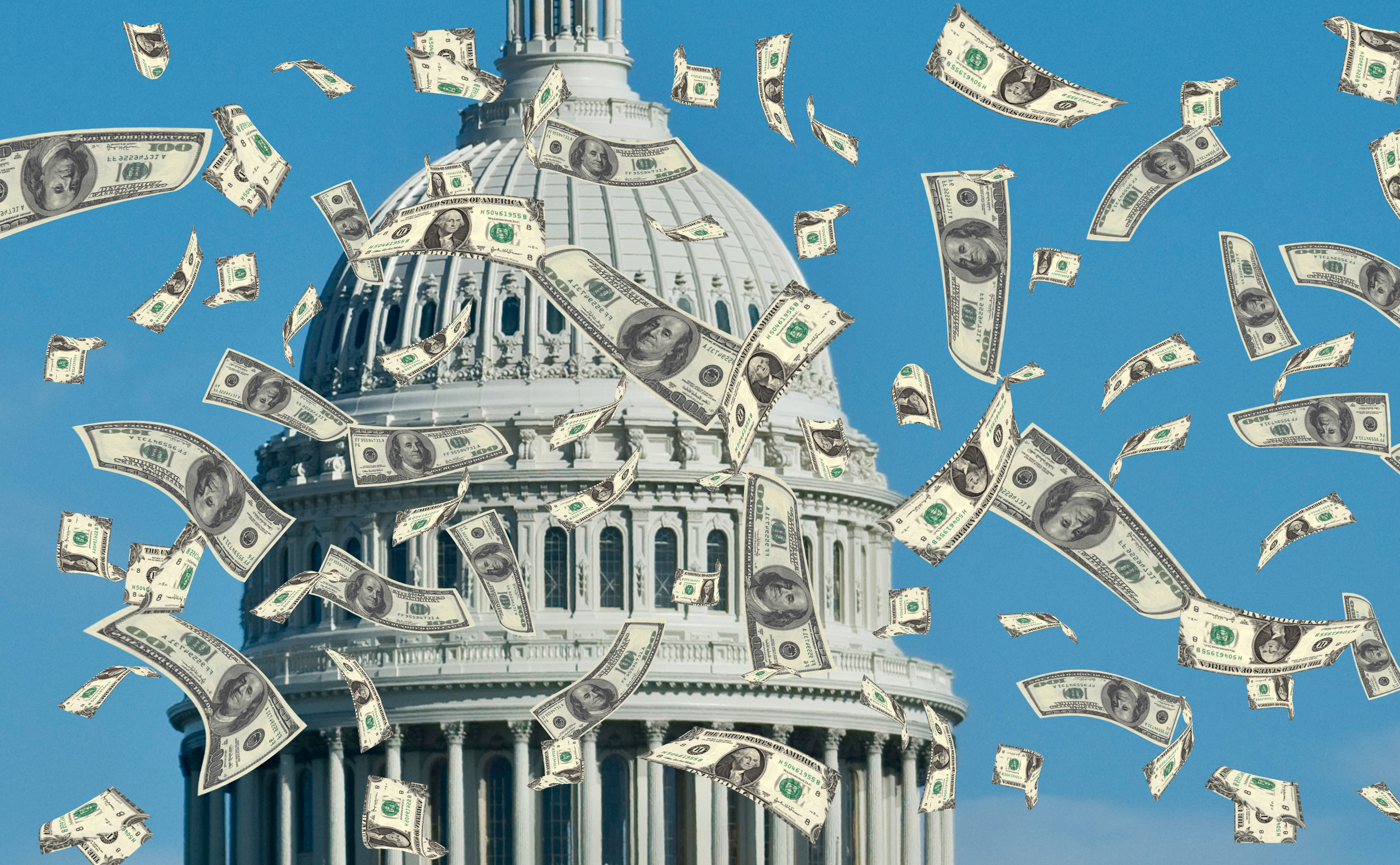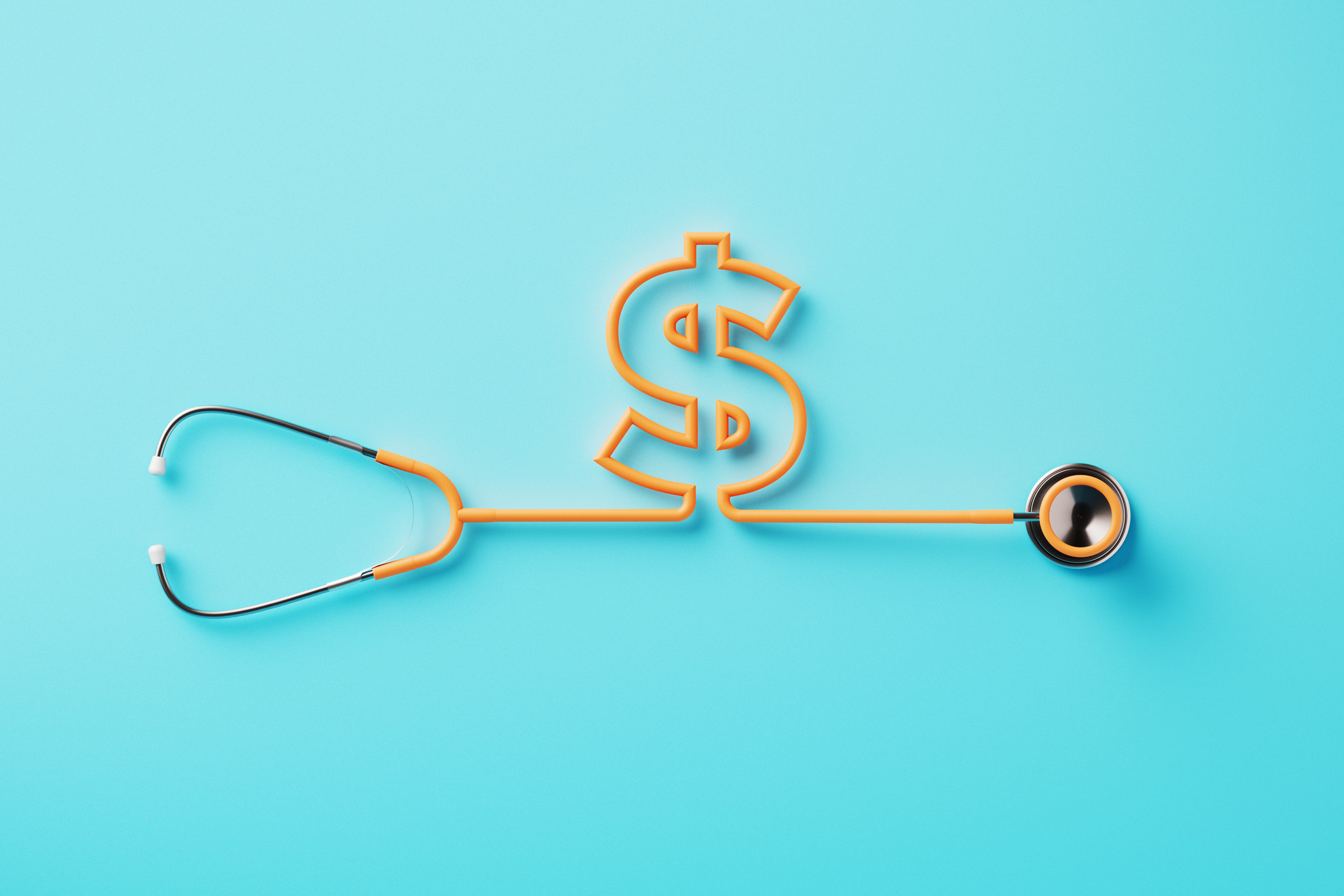States That Still Tax Diapers
Most states still tax diapers. Is your state one of them?


Diapers are an essential need, so you may be surprised to learn that most states still tax diapers. And the amount of money spent on taxes can really add up!
Here’s where you’ll pay sales tax on these baby essentials and how much extra you can expect to pay in taxes.
[Sales tax rates are based on data provided by the Tax Foundation. Estimated annual tax costs are based on a yearly diaper expense of $900. Families may spend more or less than this amount.]
From just $107.88 $24.99 for Kiplinger Personal Finance
Become a smarter, better informed investor. Subscribe from just $107.88 $24.99, plus get up to 4 Special Issues

Sign up for Kiplinger’s Free Newsletters
Profit and prosper with the best of expert advice on investing, taxes, retirement, personal finance and more - straight to your e-mail.
Profit and prosper with the best of expert advice - straight to your e-mail.
Localities may still tax diapers
Some states that have eliminated the sales tax on diapers may still allow localities (counties and cities) to charge a sales tax. Additionally, states with no sales tax may still tax diapers at the local level.
For example, Alaska doesn’t have a statewide sales tax, but residents still pay local taxes. And in Virginia, all residents pay local sales taxes on diapers.
In other states, like New York, diapers are exempt from state and local taxes. But the states on this list haven’t exempted diapers at all.
Alabama
Average combined tax rate: 9.237%
Estimated tax on diapers per year: $83.13
Alabama taxes diapers at one of the highest rates in the country. And although the average combined state and local sales tax rate is below 10%, it can reach 11% in some areas. That means the estimated yearly diaper tax increases to $103.05 in the highest taxed parts of Alabama.
- The only time diapers are tax-free in Alabama is during the state’s back-to-school sales tax holiday, which has already passed this year.
- Alabama is also a state that still taxes groceries (the rate is reduced to 3%, effective September 1).
Arizona
Average combined tax rate: 8.371%
Estimated tax on diapers per year: $75.34
There have been several proposals to eliminate sales tax on diapers and baby formula in Arizona over the past five years. However, efforts have been unsuccessful so far. The same is true for feminine hygiene products. Arizona is one of 21 states that still imposes a ‘pink tax’ (tax on menstrual products).
Arkansas
Average combined tax rate: 9.237%
Estimated tax on diapers per year: $83.13
Arkansas only exempts diapers from state sales tax during its annual sales tax holiday, which has already passed this year. Otherwise, consumers pay an average tax rate of 9.237% on diapers, which is one of the highest in the country.
- The statewide sales tax rate in Arkansas is 6.5%, so diaper taxes are high even in the lowest-taxed areas of the state.
- In the highest-taxed areas of Arkansas, tax rates exceed 12%.
Georgia
Average combined tax rate: 7.394%
Estimated tax on diapers per year: $66.55
A recent state effort to eliminate diaper taxes in Georgia failed this year, but lawmakers who support the exemption say they will try again in 2024. For now, diapers are taxed at a minimum of 4%, i.e., the statewide tax rate. However, sales tax rates can reach 9% in some parts of Georgia.
- Georgia cities where diaper taxes are the highest include Columbus, Fort Benning, Midland, Fortson, and Cataula.
- Georgia still also taxes feminine hygiene products.
Hawaii
Average combined tax rate: 4.443%
Estimated tax on diapers per year: $39.88
Hawaii still taxes diapers, but the estimated yearly tax expense of $39.88 is less than any other state on this list. But the state's average combined sales tax rate of 4.443% isn’t technically a sales tax at all. It’s a general excise tax (GET), so tax is included in the sales price on diapers.
- Hawaii has one of the lowest sales tax rates in the country.
- Sales tax is higher in some areas, such as Honolulu.
Idaho
Average combined tax rate: 6.021%
Estimated tax on diapers per year: $54.19
Idaho taxes diapers at a minimum of 6% (the statewide sales tax rate). Taxes are more expensive in some parts of the state, such as in Sun Valley, where the tax rate can reach 9%.
- Idaho taxes groceries but offers a grocery tax credit of $100 ($120 for residents 65 and older).
- There is no tax credit available for tax paid on diapers.
Illinois
Average combined tax rate: 8.838%
Estimated tax on diapers per year: $79.52
Illinois currently taxes groceries at a reduced 1% tax rate. Unfortunately, an effort to reduce Illinois’ sales tax on diapers and baby wipes to the same 1% rate didn’t make it into law. For now, diapers are taxed at a minimum rate of 6.25%, which is the state’s sales tax rate.
- Illinois has one of the highest sales tax rates in the country.
- Sales tax rates can reach 11% in some areas of the state.
Kansas
Average combined tax rate: 8.750%
Estimated tax on diapers per year: $78.75
Some lawmakers in Kansas have attempted to exempt diapers from the state’s 6.5% sales tax rate, but no attempts have been fruitful yet. Kansas families pay a minimum tax rate of 6.5% and a maximum tax rate of 10.75% on diapers.
- Groceries are taxed in Kansas but at a reduced rate.
- Diapers are not subject to a reduced tax rate in Kansas.
Kentucky
Average combined tax rate: 6.0%
Estimated tax on diapers per year: $54.00
Kentucky is another state where some government officials have pushed for a sales tax exemption on diapers. A 2022 proposal would have eliminated the tax on diapers and feminine hygiene products, but the proposal didn’t become law.
- There are no local sales taxes in Kentucky, which means all residents pay a 6% tax on diapers.
- Other essential items, such as groceries and prescription medications, are tax-exempt in Kentucky.
Maine
Average combined tax rate: 5.5%
Estimated tax on diapers per year: $49.50
Some lawmakers in Maine have been trying to eliminate sales tax on diapers since at least 2017. The most recent proposal was approved by the Maine House of Representatives in the spring of 2023. But as of now, diapers are still taxed in the state.
- While diapers are still taxable in Maine, some feminine hygiene products are not.
- Maine’s sales tax rate is low when compared with most other states in the U.S.
Michigan
Average combined tax rate: 6.0%
Estimated tax on diapers per year: $54.00
Not surprisingly, Michigan is another state where proposals to end the diaper tax have failed. A 2022 bill would have made diapers tax-exempt for both babies and adults. Michigan residents pay $6 in sales tax on every $100 diaper purchase.
- There are no local sales taxes in Michigan, so families in the state pay a 6% tax rate regardless of the county they live in.
- Michigan has repealed the sales tax on some feminine hygiene products.
Mississippi
Average combined tax rate: 7.062%
Estimated tax on diapers per year: $63.56
The statewide sales tax rate in Mississippi is 7%, but in some areas, the tax rate can reach 8%. Families shopping in higher-taxed parts of the state spend an estimated $72.00 per year in sales tax on diapers.
- Even Mississippians living in the lowest-taxed counties of the state pay an estimated $63.00 in sales tax on diaper purchases every year.
- Mississippi also still taxes groceries at the full 7% rate.
Missouri
Average combined tax rate: 8.362%
Estimated tax on diapers per year: $75.26
Although the statewide sales tax rate of 4.23% in Missouri is lower than in many other states, localities can add up to 5.88% in additional taxes. This means the estimated annual tax paid on diapers jumps to $90.99 in some parts of the state.
- Missouri also taxes groceries but at a reduced rate.
- Diapers were tax-exempt during Missouri’s 2023 sales tax holiday.
Nebraska
Average combined tax rate: 6.971%
Estimated tax on diapers per year: $62.74
While Nebraska has eliminated the tax on women's menstrual products, baby diapers remain taxable. Nebraska residents pay a minimum of 5.5% sales tax on diapers and a maximum of 7.5%.
- Other essentials, such as groceries and prescription medications, are tax-exempt in Nebraska.
- A 2023 proposal to end the state’s diaper tax did not make it into law this year.
Nevada
Average combined tax rate: 8.236%
Estimated tax on diapers per year: $74.12
Nevada won’t tax your income, but the state will tax your baby’s diapers. However, that will soon change. Thanks to an Election Day measure, Nevadans can purchase diapers tax-free starting January 1, 2025.
- Nevada does not tax groceries, prescription medications, or women’s menstrual products.
- Sales tax rates can reach 8.38% in some parts of Nevada.
New Mexico
Average combined tax rate: 7.601%
Estimated tax on diapers per year: $68.41
Efforts to eliminate the diaper tax in New Mexico haven’t been successful yet. Families in the state pay a gross receipts tax instead of a sales tax. Although New Mexico’s statewide tax rate is 4.88%, localities can add up to 4.06% in additional taxes.
- New Mexico doesn’t tax other essential items, such as groceries and prescription medications.
- The tax on women’s menstrual products was repealed in 2022.
North Carolina
Average combined tax rate: 6.996%
Estimated tax on diapers per year: $62.96
Only diapers supplied by a prescription are tax-exempt in North Carolina. So, the box of diapers you buy at the department store is still subject to state and local sales taxes.
- Groceries are tax-exempt at the state level in North Carolina, but some localities may still tax groceries.
- North Carolina also still taxes women’s hygiene products.
Ohio
Average combined tax rate: 7.238%
Estimated tax on diapers per year: $65.14
Ohio has made some women’s feminine products tax-exempt, but diapers are still taxable. Recently proposed legislation would have made baby diapers and several other baby items tax-exempt, but the proposal has not become law.
- The statewide sales tax rate in Ohio is 5.75%
- Localities in Ohio can add an additional sales tax of up to 2.25%.
Oklahoma
Average combined tax rate: 8.986%
Estimated tax on diapers per year: $80.87
Oklahoma still taxes diapers, groceries, and feminine hygiene products. Oklahoma’s statewide sales tax rate of 4.5% isn’t too bad compared to other states, but localities can add 7%. That means in some areas of Oklahoma, the sales tax rate reaches 11.5%.
- Oklahoma taxes diapers at one of the highest rates in the country.
- Diapers were included as a tax-exempt item during Oklahoma’s sales tax holiday, but the tax holiday only ran for three days.
South Carolina
Average combined tax rate: 7.499%
Estimated tax on diapers per year: $67.49
The minimum sales tax rate for taxable items, including diapers, is 6% in South Carolina. And even though the average combined sales tax rate is 7.499% in the state, the tax rate can jump as high as 9% in some areas.
- South Carolina doesn’t tax some other essentials, such as groceries and prescription medications.
- Women’s menstrual products are still taxable in South Carolina.
South Dakota
Average combined tax rate: 6.108%
Estimated tax on diapers per year: $54.97
South Dakota’s statewide sales tax rate is 4.2%, but the tax rate can climb up to 8.7% in some parts of the state. That means the estimated yearly diaper tax cost is $78.30 for some North Dakota residents.
- South Dakota also taxes feminine hygiene products.
- The state taxes groceries, too, but the tax rate on groceries is reduced to 4.2% for the next four years.
Tennessee
Average combined tax rate: 9.548%
Estimated tax on diapers per year: $85.93
Tennessee is another state that taxes groceries, diapers, and feminine hygiene products. The state also has a high statewide sales tax rate of 7%, and localities can add up to 2.75% in sales taxes.
- While groceries are generally taxable in the state, Tennessee residents can buy tax-free groceries through October 2023.
- Diapers are not included in Tennessee’s grocery tax holiday.
Utah
Average combined tax rate: 7.198%
Estimated tax on diapers per year: $64.78
Utah is yet another state that taxes essentials, such as diapers, groceries and women’s feminine hygiene products. The statewide sales tax rate in Utah is 6.1%, but localities can add an additional 4.2% on top of the state’s rate.
- If Utah voters approve of a grocery tax reduction in November, the grocery tax will reduce to 1.25%.
- Diapers are not included in the proposed reduced tax rate.
Washington
Average combined tax rate: 9.397%
Estimated tax on diapers per year: $84.57
Washington exempts groceries, prescription medications, and some feminine hygiene products from taxation, but diapers are still fair game. The sales tax rate can reach 10.6% in some parts of Washington when considering state and local taxes.
- Although Washington will tax your diaper purchases, the state will not tax your income.
- The statewide sales tax rate is 6.5% in Washington.
West Virginia
Average combined tax rate: 6.566%
Estimated tax on diapers per year: $59.09
West Virginia taxes feminine hygiene products and diapers, but at least groceries are not taxable. The state’s sales tax rate is 6%, which is high compared to many states, but localities can only add a maximum of 1% on top of that.
- West Virginia exempts diapers from taxation during its sales tax holiday, which has already passed in 2023.
- Although efforts have been unsuccessful to date, some West Virginia lawmakers have proposed eliminating the tax on diapers.
Wisconsin
Average combined tax rate: 5.429%
Estimated tax on diapers per year: $48.86
Wisconsin’s statewide sales tax rate is 5%, but localities can add a 1.75% tax rate of their own. The local tax rates will increase in Milwaukee in 2024 when two new Milwaukee sales tax increases go into effect. That means some Wisconsin residents will pay even more taxes on diapers.
- Wisconsin does not tax groceries.
- Legislative efforts to end the diaper tax in Wisconsin have failed to date.
Wyoming
Average combined tax rate: 5.441%
Estimated tax on diapers per year: $48.97
Some Wyoming lawmakers have tried to eliminate the state’s sales tax on diapers, but shoppers in the state still pay the state sales tax rate of 4%, plus any applicable local taxes.
- Localities in Wyoming can add up to 2% on top of the state’s sales tax rate.
- Wyoming also taxes feminine hygiene products.
Profit and prosper with the best of Kiplinger's advice on investing, taxes, retirement, personal finance and much more. Delivered daily. Enter your email in the box and click Sign Me Up.

Katelyn has more than 6 years of experience working in tax and finance. While she specialized in tax content while working at Kiplinger from 2023 to 2024, Katelyn has also written for digital publications on topics including insurance, retirement, and financial planning and had financial advice commissioned by national print publications. She believes knowledge is the key to success and enjoys providing content that educates and informs.
-
 Changes Are Coming for This Invesco Bond Fund
Changes Are Coming for This Invesco Bond FundThe Invesco BulletShares 2026 Corporate Bond ETF's bonds will mature in 2026. Here's what investors should do.
-
 What Science Reveals About Money and a Happy Retirement
What Science Reveals About Money and a Happy RetirementWhether you’re still planning or already retired, these research-based insights point the way to your best post-work life.
-
 7 Retirement Planning Trends: What They Mean for You in 2026
7 Retirement Planning Trends: What They Mean for You in 2026From government shutdowns to market swings, the past 12 months have been nothing if not eventful. The key trends can help you improve your own financial plan.
-
 Retirees in These 7 States Could Pay Less Property Taxes Next Year
Retirees in These 7 States Could Pay Less Property Taxes Next YearState Taxes Retirement property tax bills could be up to 65% cheaper for some older adults in 2026. Do you qualify?
-
 Estate Tax Quiz: Can You Pass the Test on the 40% Federal Rate?
Estate Tax Quiz: Can You Pass the Test on the 40% Federal Rate?Quiz How well do you know the new 2026 IRS rules for wealth transfer and the specific tax brackets that affect your heirs? Let's find out!
-
 5 Types of Gifts the IRS Won’t Tax: Even If They’re Big
5 Types of Gifts the IRS Won’t Tax: Even If They’re BigGift Tax Several categories of gifts don’t count toward annual gift tax limits. Here's what you need to know.
-
 The 'Scrooge' Strategy: How to Turn Your Old Junk Into a Tax Deduction
The 'Scrooge' Strategy: How to Turn Your Old Junk Into a Tax DeductionTax Deductions We break down the IRS rules for non-cash charitable contributions. Plus, here's a handy checklist before you donate to charity this year.
-
 Tax Refund Alert: House GOP Predicts 'Average' $1,000 Payouts in 2026
Tax Refund Alert: House GOP Predicts 'Average' $1,000 Payouts in 2026Tax Refunds Here's how the IRS tax refund outlook for 2026 is changing and what steps you can take now to prepare.
-
 New IRS Changes to FSA Contribution Limits for 2026: What to Know
New IRS Changes to FSA Contribution Limits for 2026: What to KnowHealth Care Flexible Spending Accounts have tax advantages worth looking into, especially in light of new IRS changes.
-
 Is a New $25,000 Health Care Tax Deduction Coming in 2026?
Is a New $25,000 Health Care Tax Deduction Coming in 2026?Tax Policy A proposal from GOP Sen. Josh Hawley adds to the chatter about health care affordability.
-
 Are You Middle-Class? Here's the Most Tax-Friendly State for Your Family
Are You Middle-Class? Here's the Most Tax-Friendly State for Your FamilyTax Tips We found the state with no income tax, low property tax bills and exemptions on groceries and medicine.